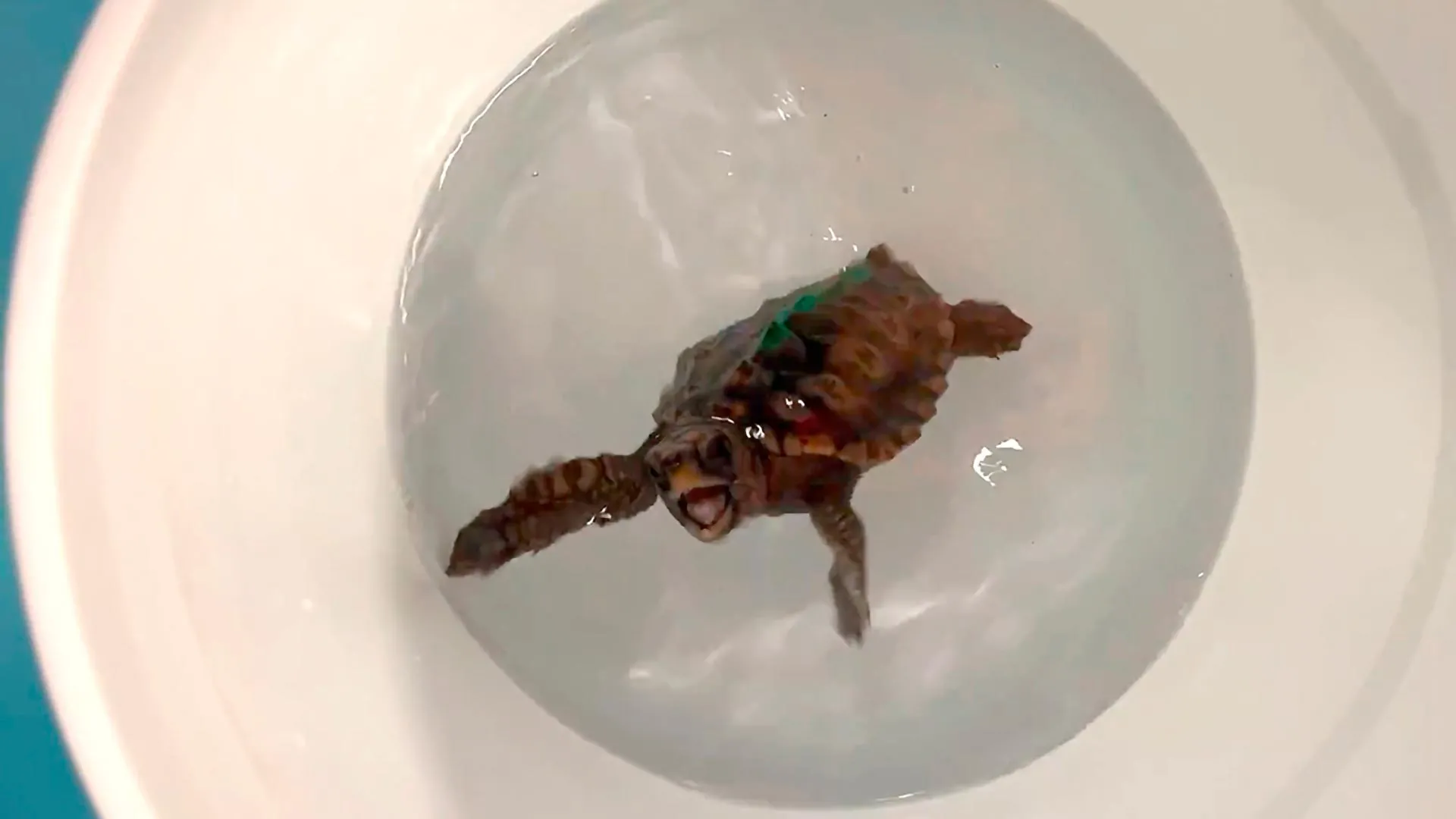Scientists reveal how baby turtles navigate thousands of miles with a hidden magnetic sense
Baby loggerhead turtles use a touch-based magnetic sense to figure out where they are in the open ocean.
- Date:
- November 22, 2025
- Source:
- The Company of Biologists
- Summary:
- Researchers taught young loggerhead turtles to associate certain magnetic fields with feeding, prompting a distinctive dance when they recognized the signal. After a magnetic pulse briefly disrupted their ability to feel magnetic forces, the turtles no longer performed the dance. This showed that hatchlings use a touch-based magnetic sense to determine their location. The discovery clarifies how these animals find their way across vast ocean routes.
- Share:

Loggerhead turtles are equipped with two different abilities for sensing the Earth's magnetic field, yet scientists had not determined which one they rely on to interpret the magnetic map they inherit at birth. New findings from researchers at the University of North Carolina at Chapel Hill, published in Journal of Experimental Biology, show that hatchlings use their ability to feel magnetic forces to determine their position along their long migration routes.
As soon as they leave the beach where they hatch, young loggerheads begin journeys that span thousands of kilometers and can continue for decades. Even at this early stage of life, they are not traveling blindly. Hatchlings come equipped with a magnetic compass that helps them maintain direction, and a magnetic map that provides location information essential for successful navigation.
Two Ways Animals Detect Earth's Magnetism
Scientists understand that animals can sense magnetic fields in two general ways. One possibility involves light-sensitive molecules that respond to magnetic conditions and could allow the animal to see magnetic patterns. The other involves small magnetite crystals within the body that shift in response to magnetic forces, which would allow the animal to feel the field. Until recently, it remained unclear which of these two systems allows loggerhead hatchlings to determine where they are in the vast ocean, and the research team set out to investigate.
Earlier work by Kayla Goforth, Catherine Lohmann, Ken Lohmann and their colleagues showed that hatchling loggerheads can learn to associate a specific magnetic field with the arrival of food. Instead of producing a reflex like Pavlov's dogs, the turtles respond with an energetic "dance." They raise part of their bodies above the water, open their mouths and move their front flippers in an excited pattern.
By feeding the hatchlings while placing them in a particular magnetic field, the researchers trained them to perform this dance whenever they later encountered that same magnetic signature.
Using Magnetic Pulses to Test Turtle Senses
"They are very food motivated and eager to dance when they think there is a possibility of being fed," says Alayna Mackiewicz of the University of North Carolina at Chapel Hill.
The research team realized that this trained behavior could help determine which magnetic sense the turtles were using. They exposed the hatchlings to a strong magnetic pulse, which temporarily interfered with the turtles' ability to feel magnetic forces. If the turtles stopped dancing afterward, it would indicate that they normally use a touch-based magnetic sense. If they continued dancing, it would suggest they rely on a different type of magnetic detection.
Training the turtles required patience. "It's really fun but takes up quite a bit of time," says Mackiewicz, who, along with Dana Lim (University of North Carolina at Chapel Hill), spent 2 months feeding 8 newly hatched loggerheads while exposing them to the magnetic field found around the Turks and Caicos islands. This ensured the turtles would learn to dance when they later encountered that same field. They also trained another group of hatchlings to recognise the magnetic field near Haiti.
Each turtle was then placed in a large metal coil that emitted a strong magnetic pulse designed to temporarily disrupt its ability to feel magnetic forces. Afterward, the researchers moved the hatchlings into the magnetic field they had been trained to recognize to see whether they would dance.
Evidence That Hatchlings Rely on Magnetic Touch
After exposure to the pulse, the hatchlings danced less often, providing evidence that they use a feel-based magnetic sense to determine their location on their inherited map rather than relying on vision.
The researchers note that hatchlings may use additional cues to understand where they are in the ocean, but the ability to feel the Earth's magnetic field clearly plays a central role.
The young turtles are also known to use another magnetic sense that may allow them to see magnetic fields, which helps them determine direction. Taken together, the two abilities complement each other and help hatchlings understand both where they are and which way they should travel during their remarkable migration.
Story Source:
Materials provided by The Company of Biologists. Note: Content may be edited for style and length.
Journal Reference:
- Alayna G. Mackiewicz, Abigail M. Glazener, Kayla M. Goforth, Dana S. Lim, Catherine M. F. Lohmann, Kenneth J. Lohmann. Disruption of the sea turtle magnetic map sense by a magnetic pulse. Journal of Experimental Biology, 2025; 228 (22) DOI: 10.1242/jeb.251243
Cite This Page: